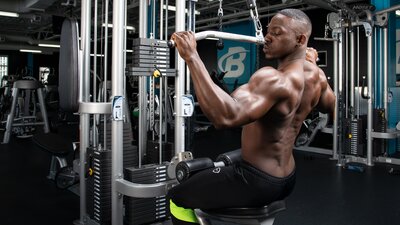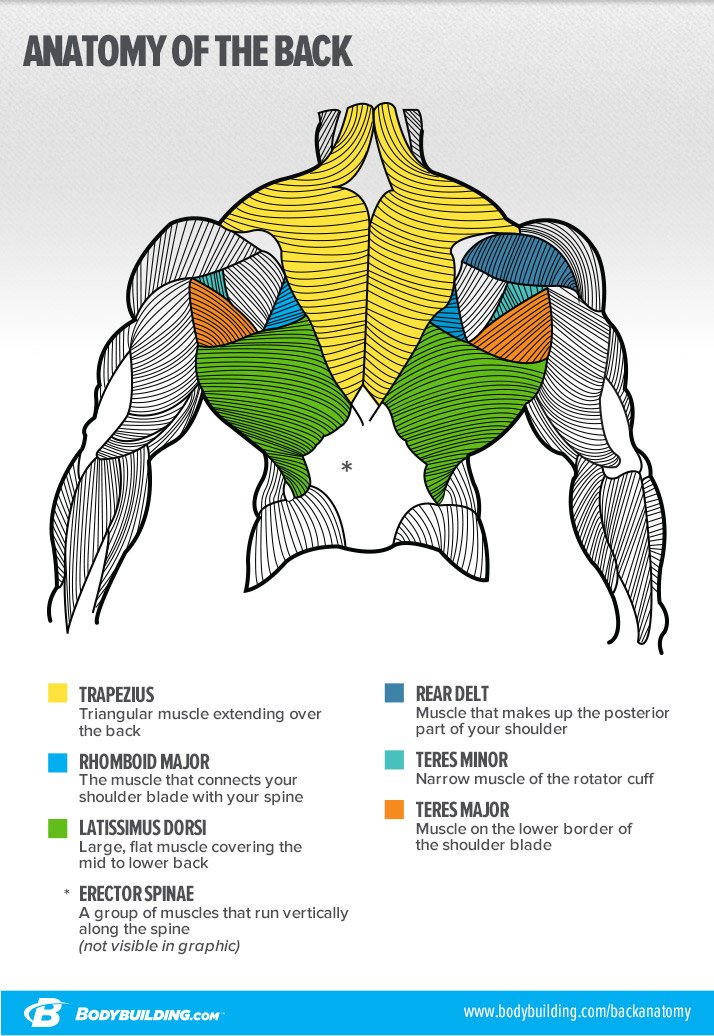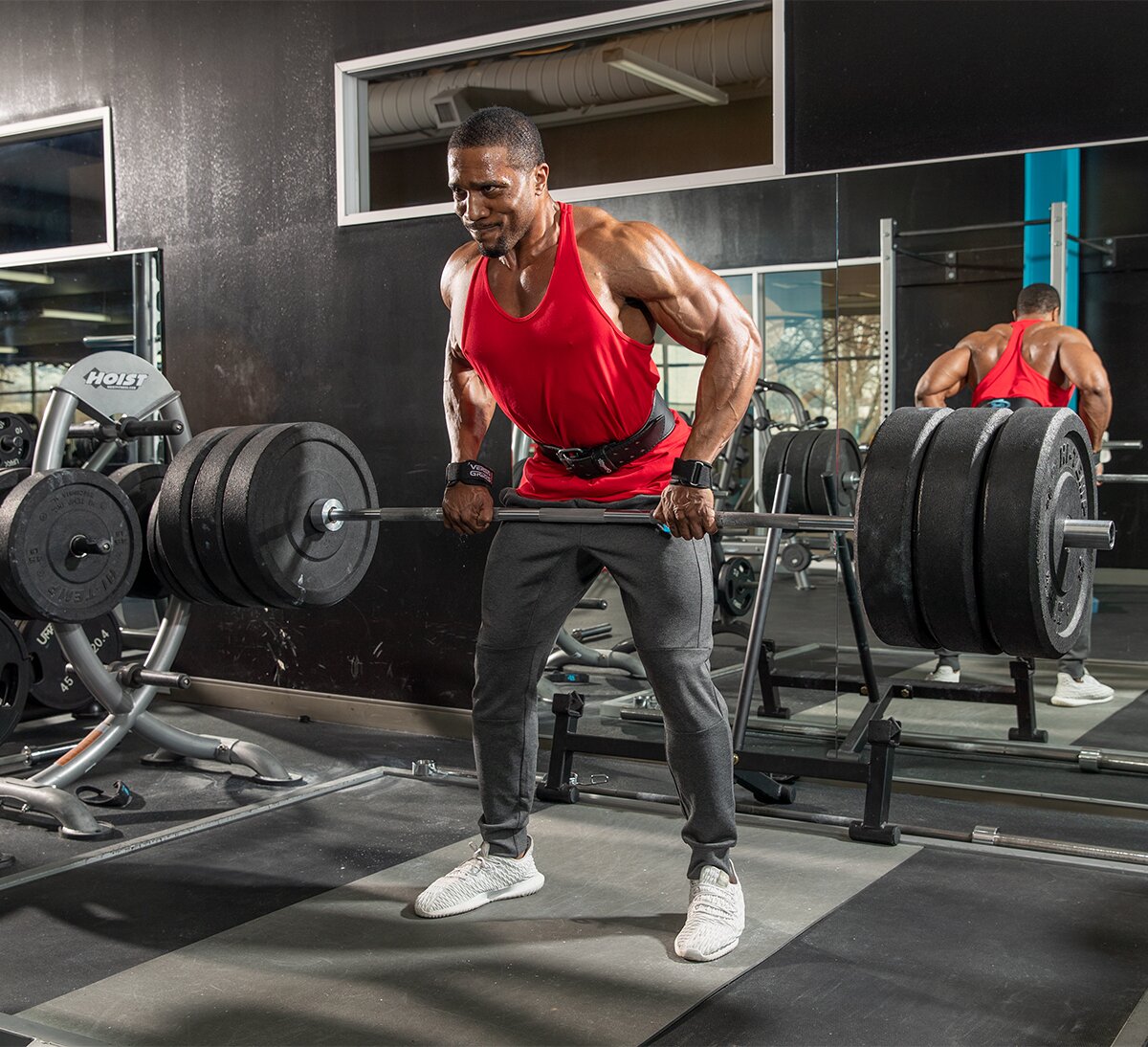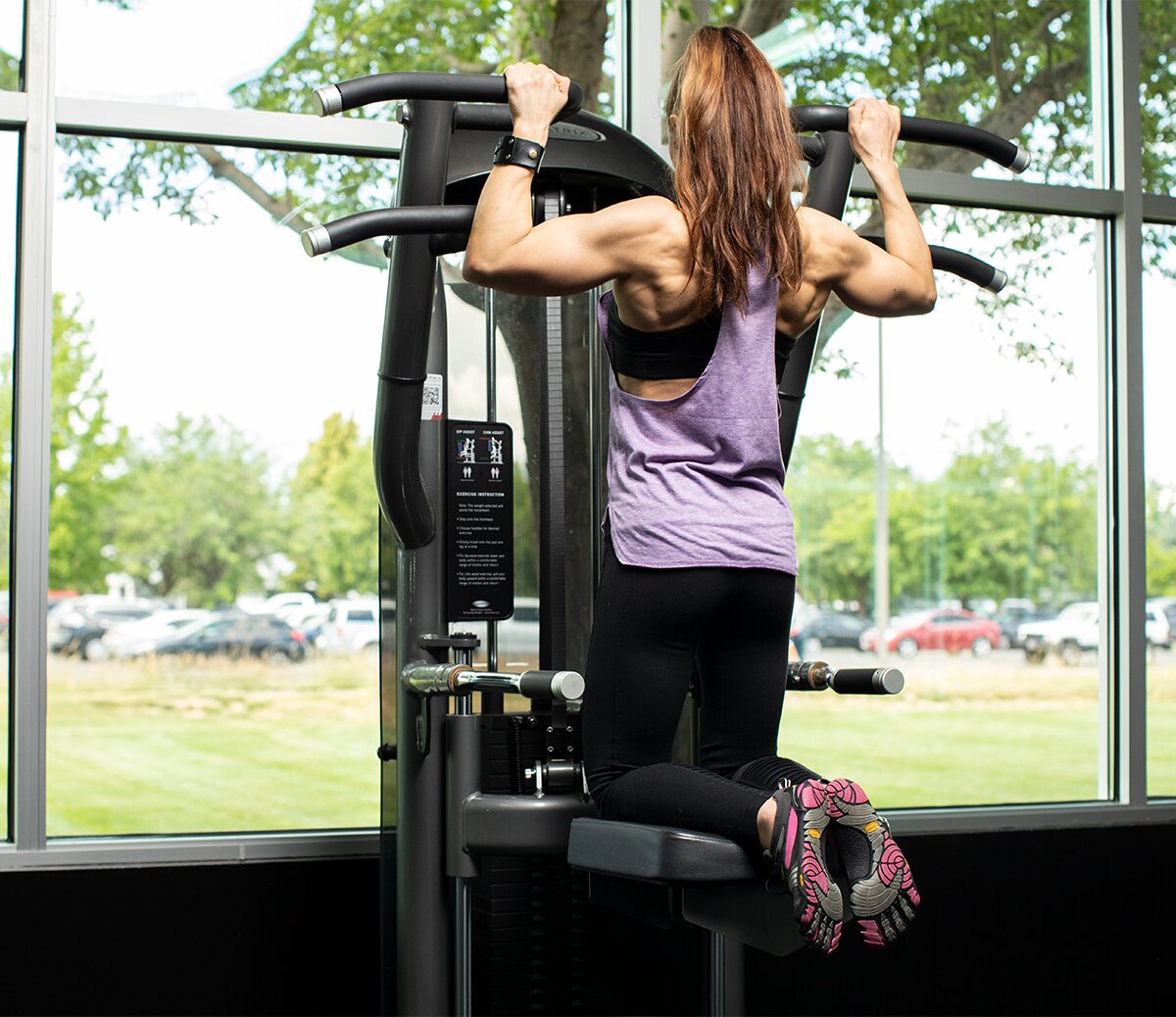
The Big Reasons Your Back Isn't Growing
Think it's as simple as "row, then grow?" You might be leaving serious gains unrealized. Here's how to fix your back day and start adding width, size, and strength!
Muscle-Growth Mistakes | Chest Mistakes | Shoulder Mistakes | Biceps Mistakes | Triceps Mistakes | Back Mistakes | Leg Mistakes | Calf Mistakes | Ab Mistakes
Mirror-muscle lifters may look good from the front, but we all know what happens when they turn around. Everything disappears! It's an unfortunate case of "out of sight, out of mind"—and their overall development, posture, and shoulder health usually suffer from it over the long term.
However, just because you show up for back day doesn't mean results will automatically follow. Lots of things can still go wrong, leaving you nursing a sore lower back and wondering why your upper back isn't growing. These are the most common mistakes you must correct before you can break away from the beach-muscle gang and call yourself a legit bodybuilder.
Mistake 1: Thinking "Back" Means "Lats"
The latissimus dorsi may be the most visually imposing muscle on your back, but it's far from the only one. Balanced back training also targets the lower and middle portions of the trapezius, the rhomboids, the rear delts, the teres major, and the erector spinae. No, a couple sets of seated cable rows and pull-downs aren't going to cover all of that!

A Better Way: You should be training your back from multiple angles and with multiple of the best exercises. You know, just like you'd do for chest, shoulders, or biceps! Also use multiple grip angles—underhand, overhand, neutral—and grip widths.
Mistake 2: Fatiguing Your Lower Back Before Heavy Rows
A popular "powerbuilding" approach to back day is to start with heavy deadlifts. What comes next? Too often, it's heavy bent-over rows. The only problem: It's not your lats that are going to give out first from this one-two punch, it's your lower back.
Do you find yourself dreading back day before you've even set foot in the gym? This might be why. One study found that bent-over rows activate the lower back as much as any other back musculature. Is that why you're doing them? Probably not.
A Better Way: If you're going to start your back workout with deadlifts, do chest-supported rows afterward rather than bent-over rows. And restrict dedicated lower-back exercises like good mornings and hyperextensions to the tail end of your back workout.
A quality leather or nylon belt can mean safer, stronger back training. Protect yourself so you can push harder! VIEW ALL
Mistake 3: Rowing Too Heavy
Classic strength-and-size rep schemes like 5x5 work well for big barbell lifts, but not every lift in the gym needs to be treated like a "big" lift. If your fifth rep finds you struggling to keep your back neutral on bent-over rows or standing T-bar rows, then you're once again taxing the wrong muscles in your workout—and maybe asking for a serious workout injury.

What does "neutral" mean? For safe and strong lifting, here are the big points:
- Shoulders higher than hips
- Lower back straight or slightly arched
- Knees slightly bent
Beginners in particular find "neutral" hard to master. The answer isn't to toughen up and grit it out, it's to lighten up and use a weight you can control!
A Better Way: Lighten up and go for double-digit reps in your back workouts using a weight you can control. Don't be afraid of chest-supported row variations.
Mistake 4: Sacrificing Range of Motion for Weight
Sense a theme here? A quick experiment: Extend your arm straight out in front of you, bend your elbow, then pull your elbow slightly behind your body. That's what a full range of motion (ROM) looks like when doing a rowing exercise. The thing is, when you use too much weight, that ROM is typically reduced on both ends of the movement—especially during the contraction.
A Better Way: Use a weight that allows you to consciously squeeze your shoulder blades together, then allow the weight to pull your arms back to full extension. On T-bar rows or landmine rows, use 25-pound plates rather than 45s to give yourself more space.

Mistake 5: Not Strapping Up
Some lifters avoid using lifting straps, fearing they'll reduce forearm and grip strength over time. The only problem is your grip will often give out before your lats do, and that can cost you an extra rep or two on each set.
Those last few reps are the ones taken to muscle failure—of your lats, not your grip—so yeah, they're important. Using straps on your heaviest sets will make extra work for the muscles you're actually targeting on back day. As for grip and forearm training, hey, it's great! Just do it on a dedicated day rather than expecting your back workout to carry the load.
Don't let small muscles hold you back from big gains. Strap up and pull big!
Mistake 6: Skipping Machines
Lifters love to glorify old-school clangin' and bangin' back exercises like bent-over rows, dumbbell rows, and pull-ups, and rightfully so. All three are bona fide back-builders! But they shouldn't be the only moves in your arsenal—especially if your form on them is anything less than perfect.
Time for a wake-up call: Your ego might be blinding you to moves that are just as good, but not as "cool." Let's just say that pro bodybuilders swear by the assisted pull-up machine and other machines for good reason.

A Better Way: If you want a back that stands out from all angles, cables and machines—both plate-loaded and pin-loaded—deserve a place on your back-day dance card. They let you push to failure and safely incorporate intensity-boosting techniques like dropsets and forced reps.
Mistake 7: Training Biceps Before Back
There's a logic to the classic "bro-split" workouts like chest and tris or back and bis. You start with the big pushing or pulling muscles (chest and back), then transition to the smaller one (triceps and biceps). Otherwise, your arms will get fatigued first and end up limiting the intensity you can bring to the big one.
This may seem obvious within a single workout. But it applies to your larger schedule, too! If you're training biceps mid-week and back a day or two later, your back is getting the short end of the stick.
A Better Way: Both within workouts and within the training week, think "big muscles" before "small muscles." This lets you crush both with maximum intensity!
Mistake 8: Under-Fueling on Back Day
The back is the biggest muscle group of the upper body. Honestly, it's more like a full-body workout than an upper body one! This is why pro bodybuilders prepare for back day just like they would for leg day. That means they have a meal or two in their stomachs, take either a stimulant or non-stim pre-workout, and have both a shake and a protein-rich meal after training.
Not doing one of those things? We may have discovered what's holding back your back!
A Better Way: Fuel up! Use a macronutrient calculator to determine your overall nutritional approach, and be sure to adequately eat and drink before and after training your back. Registered dietician and powerlifter Paul Salter's "Ultimate Guide to Leg-Day Nutrition" can help you on back day just as much as leg day!
Caffeine, beta-alanine, and nitric oxide-boosters make for next-level back workouts. VIEW ALL
